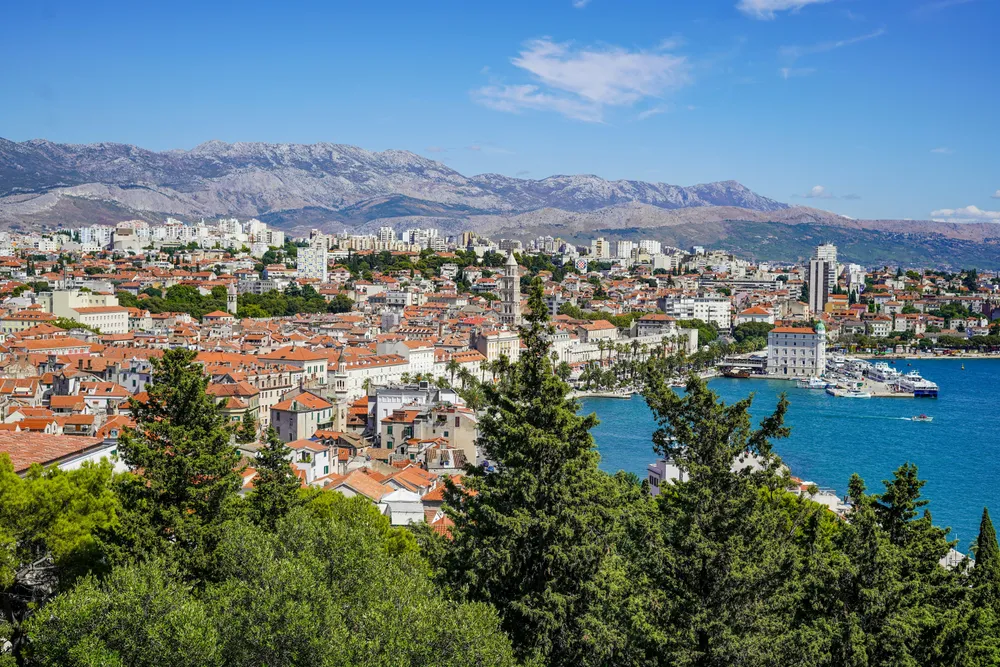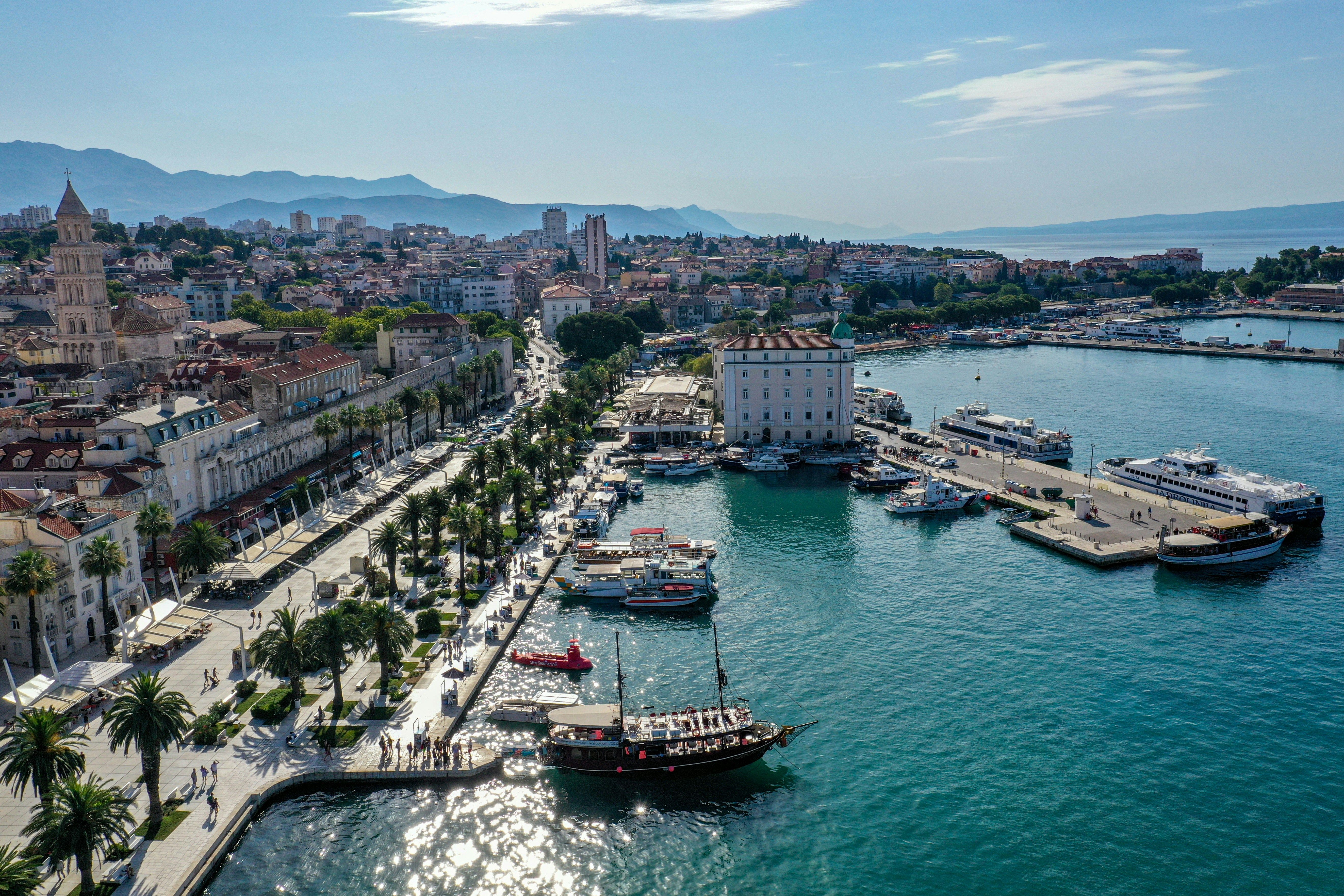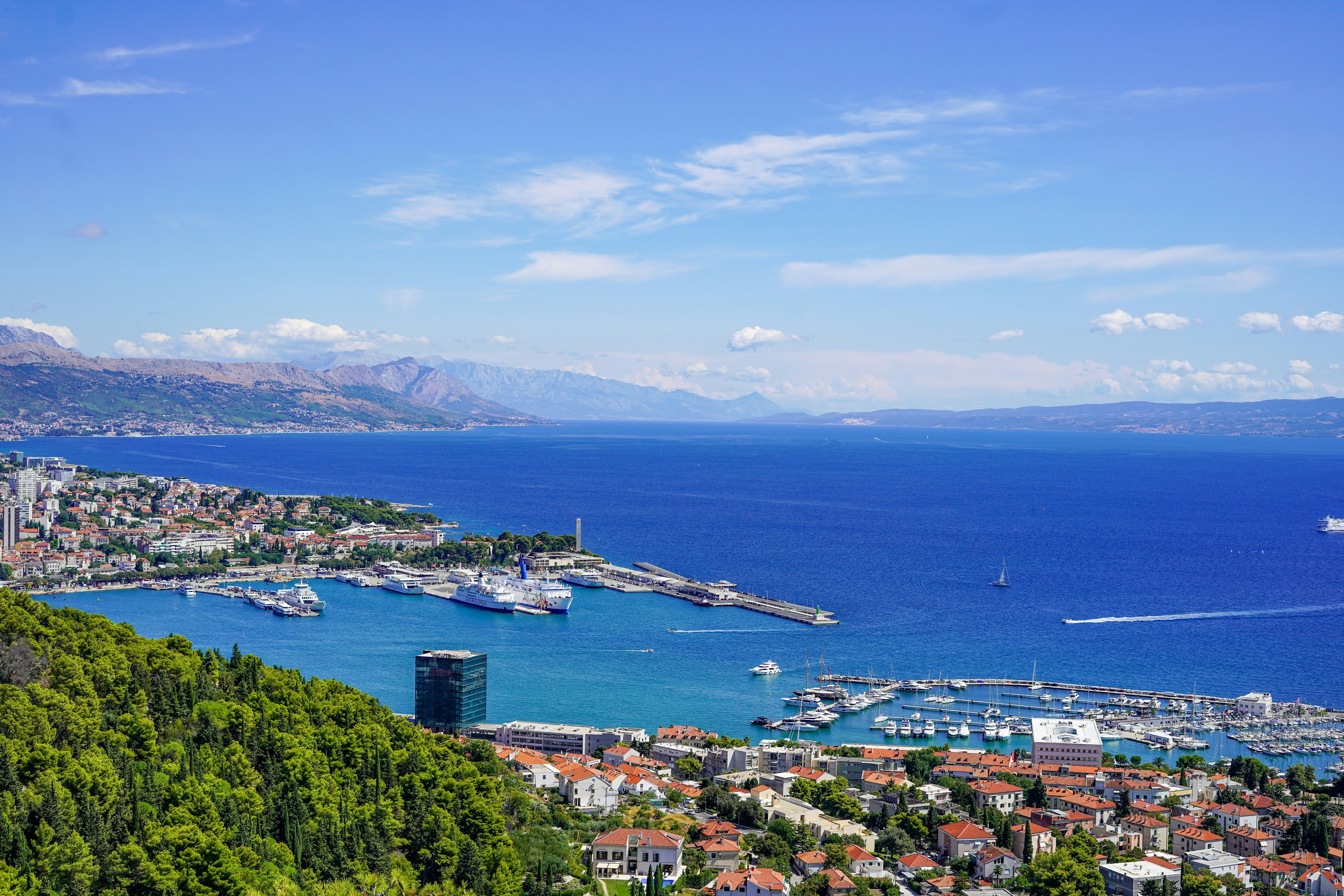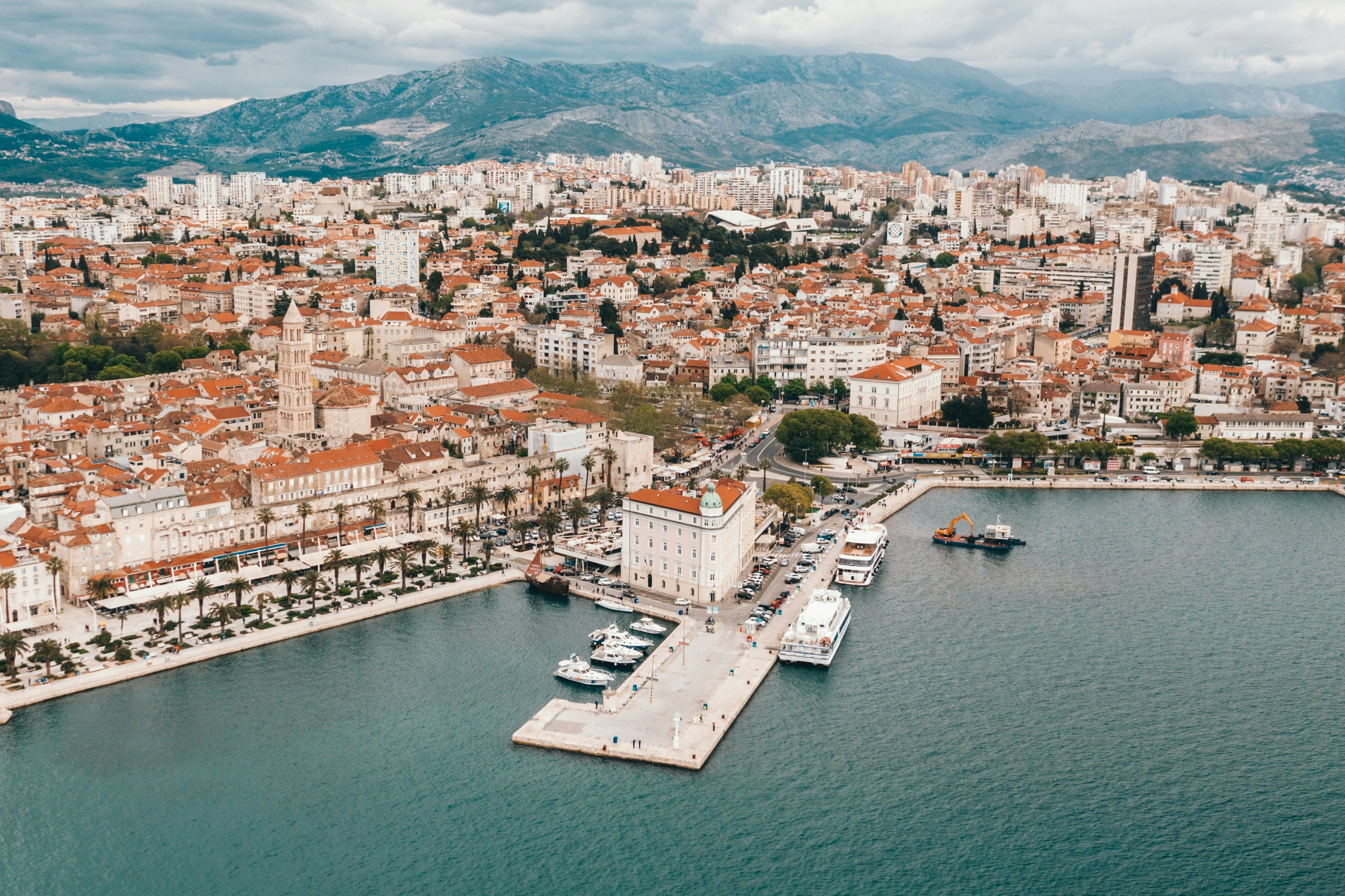Travelling from Ancona to Split: Complete Ferry & Travel Guide
Travel Guides
Travel Guides


Embarking on a journey from Ancona, Italy to Split, Croatia offers travellers a scenic adventure across the Adriatic Sea. This popular Mediterranean route connects two vibrant coastal cities rich in history, culture, and natural beauty. Whether you're planning a Croatian holiday or continuing your Italian exploration, understanding your travel options is essential. The ferry route between these ports serves as a vital transportation link, offering an authentic maritime experience while transporting you between these two stunning destinations. In this comprehensive guide, we'll explore everything you need to know about travelling from Ancona to Split, with a focus on the ferry services that operate on this route, helping you plan a smooth and enjoyable journey across the Adriatic.
When planning your journey from Ancona to Split, you have several transportation options to consider, with ferry travel being the most direct and popular choice.
The ferry route from Ancona to Split spans approximately 176.8 nautical miles (327.4 km or 203.4 miles) across the Adriatic Sea. This established maritime route offers regular sailings throughout the year, making it a reliable transportation option regardless of when you plan to travel.
Ferry services on this route typically operate with about 1 sailing per day, with approximately 4 weekly departures and 19 monthly sailings. The journey takes an average of 11 hours and 8 minutes, with the shortest crossing time being around 8 hours with Jadrolinija. The longest crossing duration is approximately 11 hours and 30 minutes.
What makes the ferry journey particularly appealing is the opportunity to experience the beautiful Adriatic Sea firsthand. Unlike flying, where you simply arrive at your destination, the ferry voyage becomes part of your travel experience. You can enjoy stunning sea views, fresh air on deck, and the gradual approach to the Croatian coastline.
Ferries also offer the advantage of bringing your vehicle, eliminating the need for car rentals at your destination and providing greater flexibility for exploring Croatia once you arrive. Additionally, overnight sailings allow you to save on accommodation costs while maximising your daytime hours for exploration.
You can take a ferry from Ancona to Split. Ferries sail in around 11 hours and 8 minutes with about 1 sailing a day. The fastest ferry sails in around 8 hours and is provided by Jadrolinija. Departures start as early as 10:00, with the last departure from Ancona to Split at 22:00.
Jadrolinija is the primary operator serving the Ancona to Split route, offering the fastest crossing time of approximately 8 hours. As Croatia's largest ferry company, Jadrolinija provides reliable service with modern vessels equipped to ensure passenger comfort throughout your journey.
Onboard a Jadrolinija ferry, you can expect a range of amenities designed to make your crossing comfortable and enjoyable. These typically include:
Jadrolinija ferries are equipped to transport both foot passengers and those travelling with vehicles. If you're planning to bring your car, it's advisable to book well in advance, especially during the summer months when demand is highest.
The ferry schedule varies throughout the year, with more frequent sailings during the peak summer season (June to September). During winter months, the schedule may be reduced, so checking current timetables is essential when planning your trip.

Ancona Port is one of Italy's major Adriatic ports and serves as a crucial gateway to the Balkans and Eastern Mediterranean. Located close to Ancona's city centre, the port is easily accessible and well-connected to other parts of Italy.
Getting to Ancona Port:
Port facilities include:
It's recommended to arrive at least 2 hours before your scheduled departure time to complete check-in procedures and boarding formalities.
Split Port is Croatia's largest passenger port and a bustling transportation hub. Its prime location places you right at the edge of Split's historic centre, making it incredibly convenient for exploring the city upon arrival.
The port layout is straightforward, with clear signage guiding disembarking passengers. After completing any necessary entry formalities, you'll find yourself just steps away from Split's famous attractions, including Diocletian's Palace.
Transportation options from Split Port include:
Nearby amenities include:
While technically possible, a day trip from Ancona to Split via ferry presents significant challenges due to the crossing duration and schedule limitations. With an average crossing time of over 11 hours and typically just one sailing per day, a traditional day trip would be impractical.
The earliest departure from Ancona is at 10:00, which would get you to Split in the evening. With the latest return departure from Split being in the afternoon or evening on most days, you would need to stay overnight in Split before returning.
A more realistic approach would be to plan a minimum of a one-night stay in Split. This would allow you to:
For those determined to maximise their time in Split, consider an overnight ferry in one direction. For example, taking an evening departure from Ancona would allow you to arrive in Split in the morning, spend the full day exploring, and then return on an overnight ferry the following evening.
Alternatively, if your schedule permits, we recommend spending at least 2-3 days in Split to truly appreciate what the city and surrounding region have to offer. Split serves as an excellent base for exploring nearby islands, national parks, and historic sites, making a longer stay well worth considering.
Split offers a wealth of attractions and activities that blend ancient history with Mediterranean charm. Here are the top five attractions you shouldn't miss:
This UNESCO World Heritage site forms the heart of Split's old town. Built as a retirement residence for Roman Emperor Diocletian in the 4th century AD, the palace complex now houses shops, restaurants, and homes within its ancient walls. Don't miss the Peristyle (central square), the Cathedral of Saint Domnius, and the atmospheric underground cellars. Open daily with unrestricted access to most public areas; some specific sites have varying opening hours.
Split's beautiful seafront promenade is lined with palm trees, cafés, and restaurants. It's the perfect place to enjoy an ice cream while people-watching or admiring views of the harbour and nearby islands. The Riva comes alive in the evenings when locals participate in the traditional Mediterranean pastime of an evening stroll (korzo). Accessible 24/7, this is a must-visit at sunset.
This forest park peninsula offers panoramic views of Split and the surrounding islands. Easily accessible from the city centre, it features walking and cycling paths, hidden medieval chapels, and secluded beaches. It's an ideal escape from the summer crowds and heat. The park is open daily from sunrise to sunset, with entry points from several locations in western Split.
Croatia's oldest museum houses an impressive collection of Greco-Roman artefacts from the region, including sculptures, mosaics, pottery, and jewellery. The museum provides valuable context for understanding Split's rich historical heritage. Open Tuesday to Sunday, 9:00-16:00 (longer hours during summer).
Located just a 10-minute walk from the city centre, this popular sandy beach is a local institution. It's famous for picigin, a traditional ball game played in shallow water. The beach is lined with cafés and clubs that transform the area into a nightlife hotspot after dark. The beach is accessible year-round, with facilities and beach bars primarily operating from May to October.
Split's diverse neighbourhoods each offer unique experiences:

Split enjoys a classic Mediterranean climate with hot, dry summers and mild, wetter winters. This favourable climate is one of the reasons why Split has become such a popular destination, particularly during the warmer months.
Summer (June to August) brings consistently warm weather with temperatures typically ranging from 25°C to 35°C (77°F to 95°F). These months see minimal rainfall and abundant sunshine, with July and August being the hottest and driest. While perfect for beach activities and swimming in the Adriatic (which reaches temperatures of around 25°C/77°F), the summer heat can be intense, especially in the city centre's stone-paved areas.
Spring (April to May) and autumn (September to October) offer milder temperatures ranging from 15°C to 25°C (59°F to 77°F), making these seasons ideal for sightseeing and outdoor activities. These shoulder seasons also bring fewer crowds and more affordable accommodation rates while still offering pleasant weather.
Winter (November to March) is characterised by temperatures typically between 5°C and 15°C (41°F to 59°F). While significantly cooler and wetter than summer, Split's winters are still mild compared to much of Europe. January and February are usually the coldest months. Winter brings a more authentic experience of local life, with fewer tourists and a more relaxed atmosphere.
Regarding ferry operations, weather conditions can occasionally impact services during winter months when strong bora winds (cold, dry downslope winds) or jugo winds (warm, humid winds) affect the Adriatic. During severe weather events, ferries may experience delays or, in rare cases, cancellations. Summer generally sees more reliable ferry operations with minimal weather-related disruptions.
Split offers options for various budget levels, generally providing better value than many Western European destinations while maintaining high quality.
For budget travellers, daily expenses might range from £50-£70 per day, including:
Mid-range travellers should expect to spend approximately £70-£150 daily:
Luxury travellers can enjoy Split's finest offerings from £150+ per day:
Money-saving tips include visiting during shoulder seasons (May-June or September-October), eating where locals dine (away from the main tourist areas), using public transportation, taking advantage of free attractions like beaches and Marjan Hill, and purchasing the Split Card for discounts on attractions if planning to visit multiple sites.
The ideal time to visit Split depends largely on your priorities and preferences.
Peak season (July-August) brings vibrant energy with bustling streets, open-air events, and perfect beach weather. However, this comes with higher prices, larger crowds at major attractions, and intense heat that can make sightseeing challenging during midday hours. Advance booking for accommodation and ferry tickets is essential during these months.
Shoulder seasons (May-June and September-October) offer an excellent balance of pleasant weather, reduced crowds, and lower prices. Temperatures remain warm enough for swimming and outdoor activities, especially in early June and September. Many consider these months the sweet spot for visiting Split, with May and June offering beautiful blooming landscapes and September showcasing harvest festivals.
Off-peak season (November-April) presents Split at its most authentic, with locals reclaiming their city after the tourist rush. While some restaurants and attractions may operate on reduced hours or close temporarily, the main historical sites remain open. Winter brings unique charms including Christmas markets in December and the Split Carnival in February. Accommodation prices drop significantly, and you'll experience a more relaxed, unhurried atmosphere.
For those primarily interested in beach activities and island hopping, mid-June through mid-September provides the most reliable weather. Culture enthusiasts might prefer May, June, or September when temperatures are milder for exploring historical sites. Budget-conscious travellers will find the best value in April-May or October-November when prices drop but most amenities remain available.
Notable events worth planning around include the Split Summer Festival (July-August), Ultra Europe Music Festival (July), Days of Diocletian (August), and the Split Film Festival (September).
Finding the perfect accommodation in Split is essential for making the most of your Croatian adventure after your ferry journey from Ancona. The city offers a range of options to suit all budgets and preferences.
Budget travellers will appreciate the hostels and guesthouses scattered throughout Split's Old Town, with prices starting from around £20 per night. These provide not only affordable lodging but also prime locations near major attractions like Diocletian's Palace.
Couples seeking a romantic getaway might prefer the boutique hotels nestled within the ancient walls of the historic centre. These charming properties offer unique character and typically range from £60-120 per night depending on the season.
Families will find excellent options in the apartment rentals throughout Split, particularly in the Bačvice area near the popular family-friendly beach. These spacious accommodations often include kitchen facilities and separate bedrooms, with prices averaging £80-150 per night.
For those travelling by campervan after disembarking from the Jadrolinija ferry, several campsites operate along the coast just outside the city centre, offering beautiful sea views and facilities from approximately £15-30 per night.

Navigating Split is relatively straightforward once you arrive by ferry from Ancona. The compact nature of the historic centre means many attractions are within walking distance of each other.
The city's bus network provides comprehensive coverage with single tickets costing around £1.50. Buses connect the ferry port with the city centre and extend to suburbs and nearby towns. During summer, services increase in frequency to accommodate the influx of visitors.
Taxis are readily available, especially at the ferry terminal when ships arrive from Ancona. While convenient, they are more expensive than public transport, with a typical ride from the port to the city centre costing approximately £8-10.
Renting a car gives you freedom to explore beyond Split, particularly the stunning Dalmatian coastline. Several rental agencies operate near the port with prices starting from about £30 per day. However, parking in the city centre can be challenging and expensive during peak season.
Cycling is increasingly popular, with bike rental shops offering daily hires from around £10. The seafront promenade (Riva) and surrounding areas are particularly pleasant to explore on two wheels.
The Ancona to Split ferry route offers an exceptional way to travel between Italy and Croatia, combining the convenience of vehicle transport with the romance of sea travel. With operators like Jadrolinija providing regular crossings throughout the year, you can enjoy this 176-nautical-mile journey across the sparkling Adriatic in as little as 8 hours.
Whether you're drawn to Split's ancient Roman architecture, the crystal-clear waters of the Dalmatian coast, or using the city as a gateway to Croatia's stunning islands, arriving by ferry adds a special dimension to your travel experience.
With up to 19 sailings monthly and departures available from 10:00 to 22:00, you can find a crossing that perfectly suits your schedule. Why not book your Ancona to Split ferry today and begin your Croatian adventure in style? The Adriatic awaits!